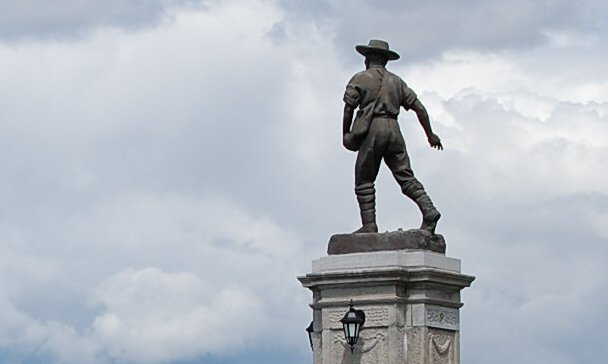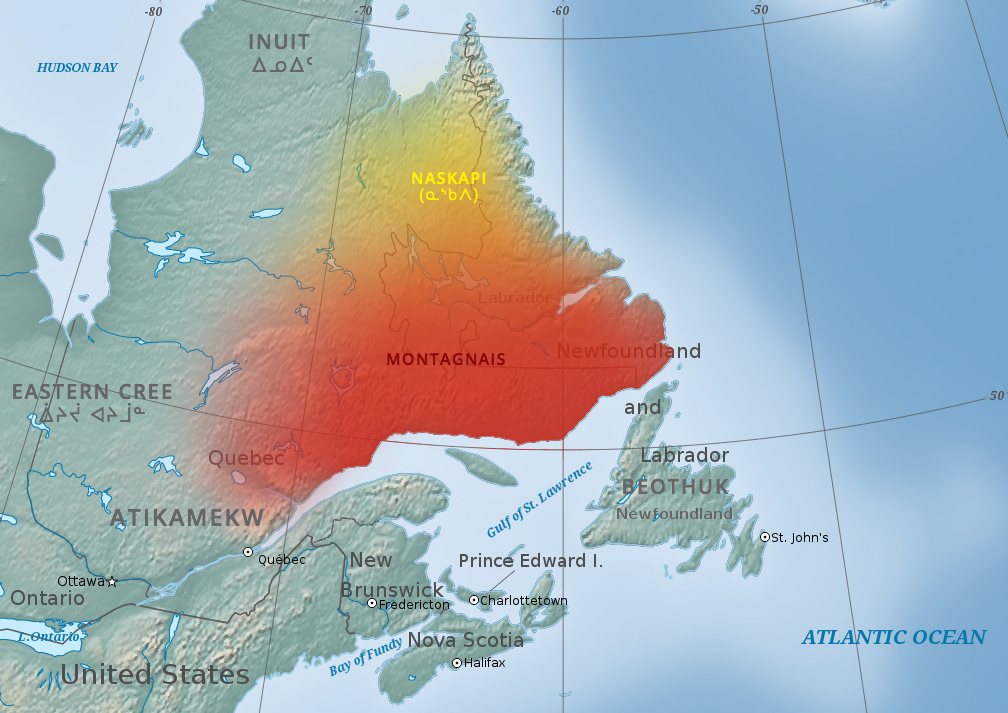|
La Baie
La Baie (, ) is one of three boroughs in the city of Saguenay, Quebec, Canada. It was created during Quebec's municipal reorganization in 2002. From 1976 to 2001, it was known as the Town of La Baie, a municipality composed of the Grande-Baie, Bagotville and Port-Alfred sectors. It is located on the bank of the Ha! Ha! Bay (French: ''baie des Ha! Ha!'') at the mouths of the Ha! Ha! River (French: ''rivière Ha! Ha!'') and the Mars River (French: ''rivière à Mars''). La Baie was the first colony built in the Saguenay-Lac-St-Jean region. It was founded by the Société des Vingt et un who settled the area in 1838. The depth of the banks of the Ha! Ha! Bay's waterways facilitated the rapid development of the region's largest harbour facilities after the railways were built in 1910. The borough's main sources of socio-economic development have been the logging and the pulp and paper industries since the nineteenth and twentieth centuries respectively. Aluminum production ... [...More Info...] [...Related Items...] OR: [Wikipedia] [Google] [Baidu] |
Boroughs Of Saguenay, Quebec
Saguenay, Quebec is divided into three boroughs (). * Chicoutimi * Jonquière * La Baie These were former cities which ceased to exist on February 18, 2002, when they were amalgamated into the expanded city of Saguenay. The amalgamation involved the following cities and municipalities in addition to the above: * the Municipality of Lac-Kénogami (now part of Jonquière borough) * the City of Laterrière (now part of Chicoutimi borough) * the Municipality of Shipshaw (now part of Jonquière borough) * part of the Township of Tremblay (now part of Chicoutimi borough; the rest of it was annexed to Saint-Honoré, Quebec, Saint-Honoré) External links Map showing boroughs {dead link, date=November 2016 , bot=InternetArchiveBot , fix-attempted=yes Boroughs of Saguenay, Quebec, Lists of populated places in Quebec, Boroughs, List of Saguenay Quebec ... [...More Info...] [...Related Items...] OR: [Wikipedia] [Google] [Baidu] |
Pulp And Paper Industry
The pulp and paper industry comprises companies that use wood, specifically pulpwood, as raw material and produce pulp, paper, paperboard, and other cellulose-based products. Manufacturing process In the manufacturing process, pulp is introduced into a paper machine where it is shaped into a paper web and water is extracted through pressing and drying stages. Pressing involves removing water from the sheet by applying force. This process employs a specialized type of felt, distinct from traditional felt, to absorb the water. In contrast, hand-made paper uses a blotter sheet for this purpose. Drying involves eliminating water from the paper sheets through air or heat. Historically, this was achieved by hanging the sheets to dry, similar to laundry. In modern papermaking, various heated drying mechanisms are employed, with the steam-heated can dryer being the most prevalent on paper machines. History Papermaking as a craft is ancient, and for centuries it used various fibers, ... [...More Info...] [...Related Items...] OR: [Wikipedia] [Google] [Baidu] |
Innu
The Innu/Ilnu ('man, person'), formerly called Montagnais (French for ' mountain people'; ), are the Indigenous Canadians who inhabit northeastern Labrador in present-day Newfoundland and Labrador and some portions of Quebec. They refer to their traditional homeland as ''Nitassinan'' ('Our Land', ᓂᑕᔅᓯᓇᓐ) or ''Innu-assi'' ('Innu Land'). The ancestors of the modern First Nations were known to have lived on these lands as hunter-gatherers for many thousands of years. To support their seasonal hunting migrations, they created portable tents made of animal skins. Their subsistence activities were historically centred on hunting and trapping caribou, moose, deer, and small game. Their language, which changed over time from Old Montagnais to Innu-aimun (popularly known since the French colonial era as Montagnais), is spoken throughout Nitassinan, with certain dialect differences. It is part of the Cree–Montagnais– Naskapi dialect continuum, and is unrelated to ... [...More Info...] [...Related Items...] OR: [Wikipedia] [Google] [Baidu] |
Nomadic
Nomads are communities without fixed habitation who regularly move to and from areas. Such groups include hunter-gatherers, pastoral nomads (owning livestock), tinkers and trader nomads. In the twentieth century, the population of nomadic pastoral tribes slowly decreased, reaching an estimated 30–40 million nomads in the world . Nomadic hunting and gathering—following seasonally available wild plants and game—is by far the oldest human subsistence method known. Pastoralists raise herds of domesticated livestock, driving or accompanying them in patterns that normally avoid depleting pastures beyond their ability to recover. Nomadism is also a lifestyle adapted to infertile regions such as steppe, tundra, or ice and sand, where mobility is the most efficient strategy for exploiting scarce resources. For example, many groups living in the tundra are reindeer herders and are semi-nomadic, following forage for their animals. Sometimes also described as "nomadic" are var ... [...More Info...] [...Related Items...] OR: [Wikipedia] [Google] [Baidu] |
CKAJ-FM
CKAJ-FM is a French language Canadian radio station located in Saguenay, Quebec. Owned and operated by La Radio Communautaire du Saguenay, it broadcasts on 92.5 MHz with an effective radiated power of 14,164 watts ( class B) using an omnidirectional antenna, while a low-power rebroadcaster serves the borough of La Baie on 99.7 MHz. The station is a community radio station with a mainly oldies format since 1997 (it previously had an adult contemporary format). History The station was first licensed by the Canadian Radio-television and Telecommunications Commission in 1976, and began broadcasting on April 11, 1977 with the call sign CHOC-FM. It originally aired from a low-power 423-watt transmitter, which was increased to 3,000 watts in 1981. Due to a variety of financial and staff turnover problems, the station was granted only short-term license renewals between 1986 and 1998, sometimes for as little as three months at a time rather than the standard seven-year license pe ... [...More Info...] [...Related Items...] OR: [Wikipedia] [Google] [Baidu] |
Jonquière
Jonquière (; ; Canada 2021 Census, 2021 population: 60,250) is a List of boroughs in Quebec, borough (arrondissement) of the city of Saguenay, Quebec, Saguenay in the Saguenay–Lac-Saint-Jean region of Quebec, Canada. It is located on the Saguenay River, near the borough of Chicoutimi. History Jonquière was founded in 1847 by Marguerite Belley, who came from La Malbaie, Quebec, La Malbaie to settle on the Rivière aux Sables. It was named after Jacques-Pierre de Taffanel de la Jonquière, Marquis de la Jonquière, governor of New France from 1749 to 1752. Growth came from the construction of pulp and paper mills at the beginning of the 20th century. Between 1925 and 1928, the world's largest aluminum plant was built along with the city Arvida (then a separate town). In 1942, to supply power to the plant, Alcan built a hydroelectric station at Shipshaw that was the largest in the world at that time. Jonquière, Arvida and Kénogami were amalgamated into the single city of J ... [...More Info...] [...Related Items...] OR: [Wikipedia] [Google] [Baidu] |
Chicoutimi
Chicoutimi ( , ) is the most populous borough (arrondissement) of the city of Saguenay in Quebec, Canada. It is situated at the confluence of the Saguenay and Chicoutimi rivers. During the 20th century, it became the main administrative and commercial centre of the Saguenay–Lac-Saint-Jean region. In 2002 it merged into the new city of Saguenay and forms the heart of the 5th-largest urban area of the province of Quebec. At the 2021 census, its population was 69,004. History What was ultimately to become the centre of the borough of Chicoutimi was first settled by French colonists in 1676 as a trading post in the fur trade. At that time, the Saguenay and the Chicoutimi rivers had been used as waterways by the Montagnais tribes for centuries. The name ''Chicoutimi'' derives from the . After the British seized Lower Canada, the Chicoutimi trading post continued to operate only until 1782, as the fur trade had moved further west of the Great Lakes. The city of Chicoutimi ... [...More Info...] [...Related Items...] OR: [Wikipedia] [Google] [Baidu] |
CF-18
The McDonnell Douglas CF-18 Hornet (official military designation CF-188) is a Royal Canadian Air Force (RCAF) variant of the American McDonnell Douglas F/A-18 Hornet fighter aircraft. In 1980, the F/A-18 was selected as the winner of the New Fighter Aircraft Project competition to replace the CF-104 Starfighter, CF-101 Voodoo and the CF-116 Freedom Fighter. Deliveries of the CF-18 to the Canadian Armed Forces began in 1982. CF-18s have supported North American Aerospace Defense Command (NORAD) air sovereignty patrols and participated in combat during the Gulf War in 1991, the Kosovo War in the late 1990s, and as part of the Canadian contribution to the international Libyan no-fly zone in 2011. CF-18s were also part of the Canadian contribution to the military intervention against ISIL, Operation Impact. A procurement process to replace the CF-18 with the Lockheed Martin F-35 Lightning II has been ongoing since 1997. Development New Fighter Aircraft program In 1977, t ... [...More Info...] [...Related Items...] OR: [Wikipedia] [Google] [Baidu] |
Royal Canadian Air Force
The Royal Canadian Air Force (RCAF; ) is the air and space force of Canada. Its role is to "provide the Canadian Forces with relevant, responsive and effective airpower". The RCAF is one of three environmental commands within the unified Canadian Armed Forces. As of 2020, the Royal Canadian Air Force consists of 12,074 Regular Force and 1,969 Primary Reserve personnel, supported by 1,518 civilians, and operates 258 manned aircraft and nine unmanned aerial vehicles. Lieutenant-General Eric Kenny is the current Commander of the Royal Canadian Air Force and Chief of the Air Force Staff. The Royal Canadian Air Force is responsible for all aircraft operations of the Canadian Forces, enforcing the security of Canada's airspace and providing aircraft to support the missions of the Royal Canadian Navy and the Canadian Army. The RCAF is a partner with the United States Air Force in protecting continental airspace under the North American Aerospace Defense Command (NORAD). The RCA ... [...More Info...] [...Related Items...] OR: [Wikipedia] [Google] [Baidu] |
Canadian Forces Base Bagotville
Canadian Forces Base Bagotville , commonly referred to as CFB Bagotville, and also known as Bagotville Airport or Saguenay-Bagotville Airport, is a Canadian Forces base west of Bagotville in the city of Saguenay. Located in the centre of Quebec, less than north of Quebec City, CFB Bagotville is operated as an air force base by the Royal Canadian Air Force (RCAF) and is one of two bases in the country using the CF-18 Hornet fighter/interceptor, the other being CFB Cold Lake. Its primary RCAF lodger units are 2 Wing and 3 Wing. CFB Bagotville's airfield is also used by civilian aircraft, with civilian operations at the base referring to the facility as Saguenay-Bagotville Airport (). The airport is classified as an airport of entry by Nav Canada and is staffed by the Canada Border Services Agency (CBSA). CBSA officers can handle civilian aircraft with no more than 30 passengers between 0800-1630 on weekdays. , approximately 1,700 military and civilian people work at CFB Bagotvi ... [...More Info...] [...Related Items...] OR: [Wikipedia] [Google] [Baidu] |






